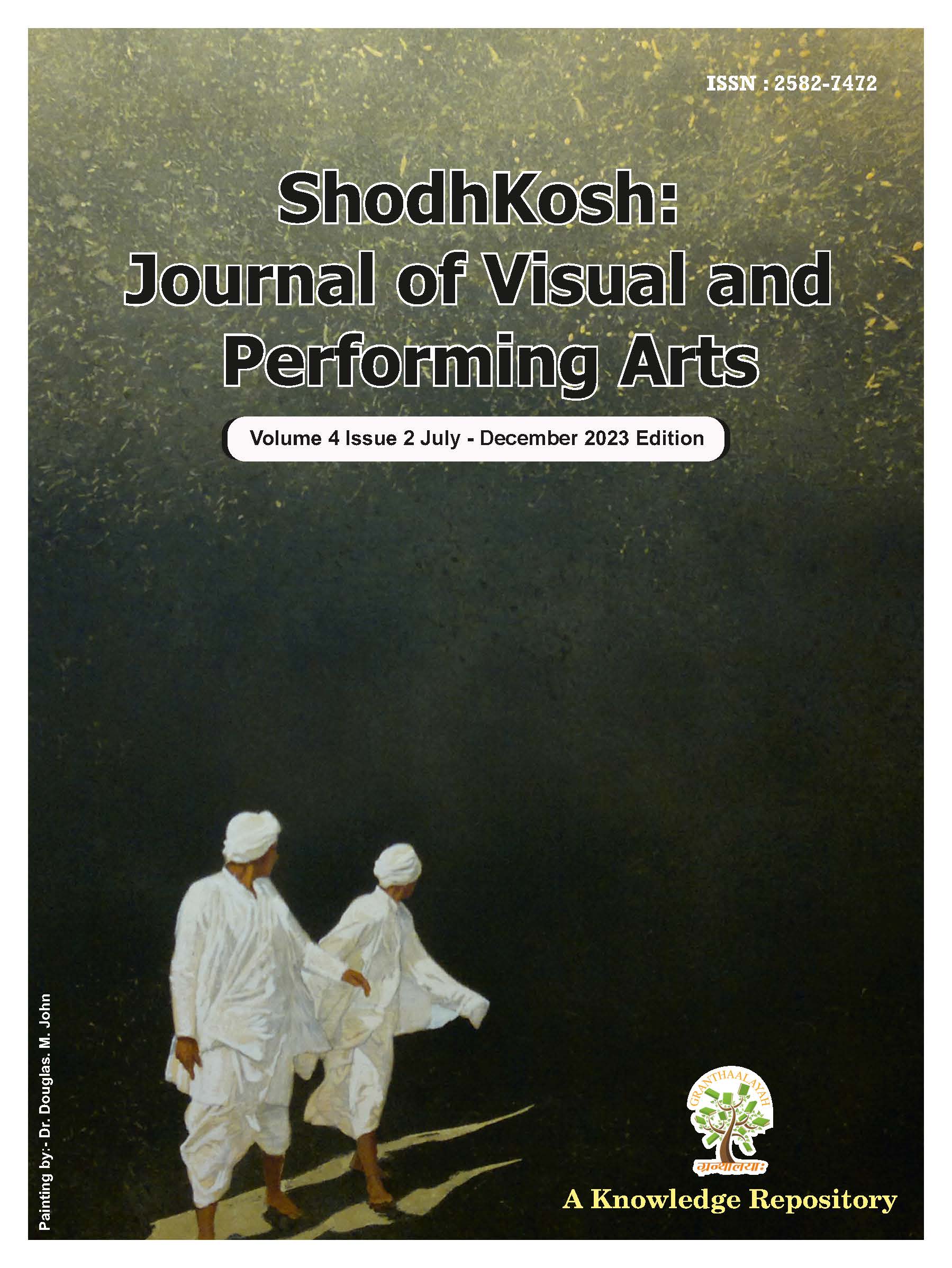DANDA NATA OF ODISHA: A CRITICAL ANALYSIS OF ITS CULTURAL AND RITUALISTIC DIMENSIONS WITH SPECIAL REFERENCE TO BOUDH
DOI:
https://doi.org/10.29121/shodhkosh.v4.i2.2023.4026Keywords:
Danda Nata, Boudh, Bandana, Dalapuja, Sola Suanga Danda Nata, Lord ShivaAbstract [English]
Danda Nata is a vibrant folk tradition celebrated in rural and tribal communities of Odisha, with Boudh district standing out for its unique variations. Held annually during Chaitra (March–April), the festival spans thirteen or twenty-one days and culminates on Maha Vishuba Sankranti. The celebration is marked by rhythmic drumming, energetic dance, dramatic acts, and comedic performances, blending spiritual rituals with theatrical expressions. Central to the festival are the devotees, known as Danduas or Bhoktas, who undertake vows of austerity and devotion, guided by the Pata Dandua or Pata Bhokta. The event unfolds in four phases: Dhuli Danda, Pani Danda, Agni Danda, and Suanga Danda. Each phase involves distinct rituals, physical endurance, and purification through sand, water, and fire. The final phase, Nrutya Danda, features dance, music, and satire. Boudh’s Danda Nata is distinct for incorporating Bandana, a devotional recitation, Dalapuja, a special puja performed before Meru, and Sola Suanga Danda Nata, which includes sixteen forms of dramatic and satirical performances. These elements add depth to the festival, blending humor, folklore, and religious themes. The worship of Lord Shiva and Goddess Kali ties Danda Nata to both Hindu and indigenous traditions. The performance, accompanied by instruments like the dhol, mahuri, flute, and mardal, remains a dynamic cultural experience. In Boudh, Danda Nata continues to evolve, preserving its spiritual and artistic heritage, making it a unique and living expression of Odisha’s folk traditions.
References
Das, K. (1958). Odia loka nataka (Odia). Viswabharati.
Dash, D. (1982). Dandanata. Odisha Sangeeta Nataka Academy.
Dash, R. N. (2016). The folk dance of Ganjam-Danda Nacha. Souvenir Folk Fair, 45.
Mishra, P. (2020). Subarnapur ra loka sanskruti. Binapani Prakashana.
Mohapatra, P. (2021a). Rituals and cultural practices of Danda Nata: A study in Odisha. Odisha University Press.
Nayak, S. (2015). Danda Nata: Unison of poise and vitality. Nartanam, 15(1), 143-161.
Nayak, S. P. (2019). Danda Nata: A folk tradition of Odisha. International Journal of Humanities and Social Science Research, 7(1), 10-15.
Panigrahi, R. P. (2013). The phallus and the fire: Theatre anthropology of Danda Nata. Mittal Publication.
Padhy, S. K. (2022). Boudh State: A brief historical review. Mohatsthava Smaranika, Gandharadi Lokakala Mohatsthava, 17.
Patra, B. (2014). Dhulidandara lokanatya riti (Odia). Mohatsthava Smaranika, Boudh Cultural Forum, 33.
Pattnaik, D. N. (1991). Folk dance of Odisha. Odisha Sangeeta Nataka Academy.
Satapathy, S. K. (1999). Danda Nata prabidhi o prayoga (Odia). Mrs. Saibalini Ratha.
Sahu, B. (2015). Folk life and culture of Odisha. Kaberi Books.
Published
How to Cite
Issue
Section
License
Copyright (c) 2023 Dibya Ranjan Tripathy, Dr. Santosh Kumar Mallik

This work is licensed under a Creative Commons Attribution 4.0 International License.
With the licence CC-BY, authors retain the copyright, allowing anyone to download, reuse, re-print, modify, distribute, and/or copy their contribution. The work must be properly attributed to its author.
It is not necessary to ask for further permission from the author or journal board.
This journal provides immediate open access to its content on the principle that making research freely available to the public supports a greater global exchange of knowledge.































